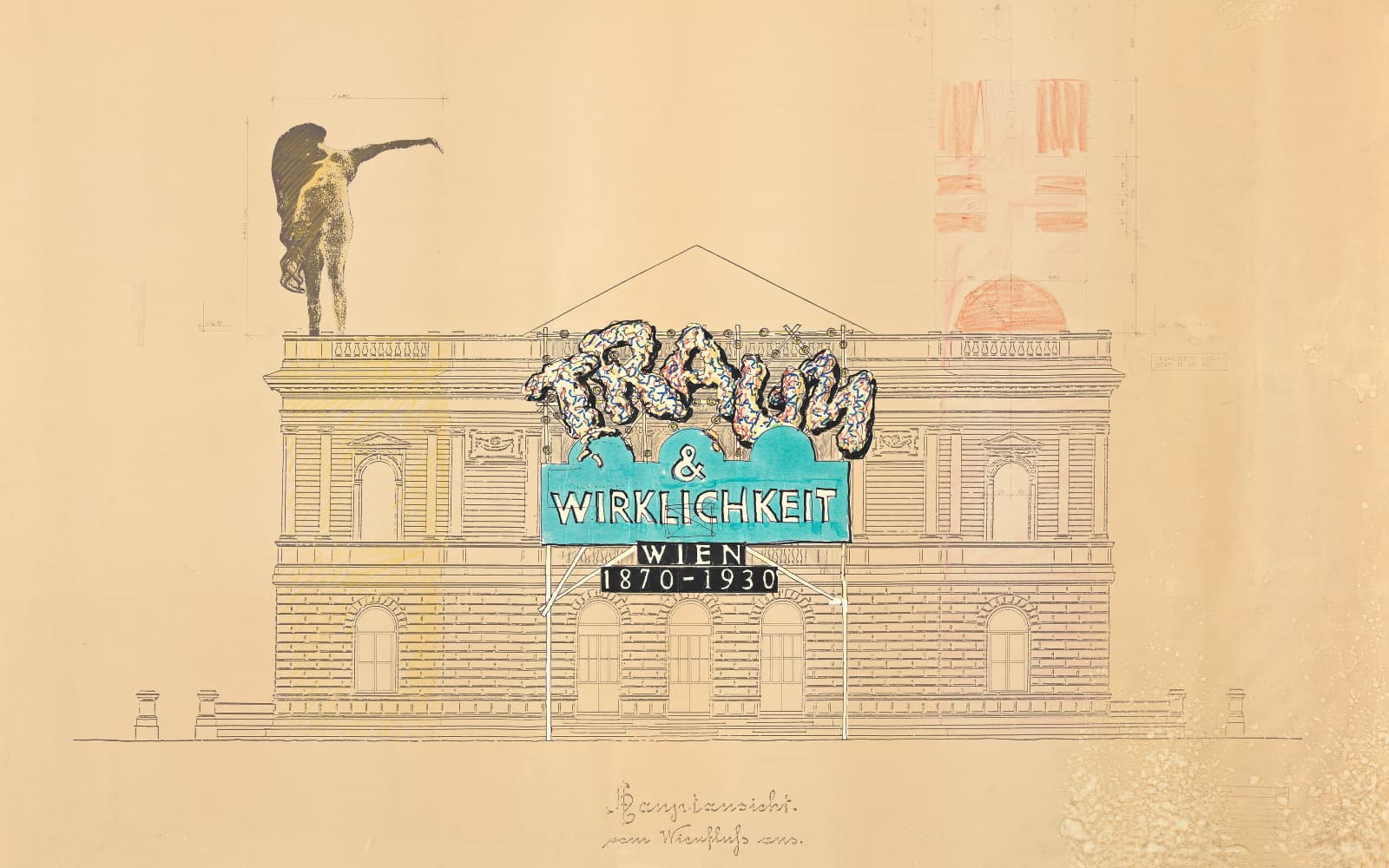Cultural critique, design speculation and full-scale mock-ups
Downloads
DOI:
https://doi.org/10.47982/spool.2023.1.03Keywords:
mock-ups, fragments, assemblage, Medicine, Karl-Marx-Hof, billboardsAbstract
This essay delves into the installation designed by Hans Hollein for the Künstlerhaus facade in Vienna in 1985. It serves as an illustrative case of material speculation in architecture, particularly regarding the incorporation of ‘historical’ elements in contemporary architectural practice. Through a close reading of this installation, realized in the context of the exhibition ‘Traum und Wirklichkeit, Wien 1870-1930’ (Dream and Reality, Vienna 1870-1930), I discuss how such speculation entails the physical replication of carefully chosen ‘historical’ forms and their reassembly in what would be best described as a ‘fragmentary whole.’ However, the reintegration of historical fragments into the present can manifest in diverse ways. I argue that in the installation that reshaped the facade of the Künstlerhaus, Hollein explored two contrasting modes while tracing the possibilities (and pitfalls) of their synthesis.
(image: Drawing by Hans Hollein for the Traum und Wirklichkeit installation. Credit: Architekturzentrum Wien, Collection)
How to Cite
Published
References
A Dictionary of Architecture and Landscape Architecture. (2006). https://doi.org/10.1093/ACREF/9780198606789.001.0001 DOI: https://doi.org/10.1093/acref/9780198606789.001.0001
Achleitner, F. (1980). Comments on Viennese Architectural History: Motifs and Motivations, Background and Influences, Therapeutic Nihilism. In K. Frampton (Ed.), A New Wave of Austrian Architecture (pp. [page range]). Institute for Architecture and Urban Studies.
Agnew, V., Lamb, J., & Tomann, J. (2019). The Routledge Handbook of Reenactment Studies: Key Terms in the Field. Taylor and Francis. DOI: https://doi.org/10.4324/9780429445637
Aichelburg, W. (2003). Das Wiener Künstlerhaus 1861 - 2001. Österreichischer Kunst und Kulturverlag.
Aureli, P. V. (2007). The Difficult Whole. Log, 9, 39–61.
Blau, E. (2021). Re-Visiting Red Vienna as an Urban Project. Austrian Embassy Washington. https://www.austria.org/revisiting-red-vienna
Blau, E. (2018). The Architecture of Red Vienna, 1919-1934. MIT Press.
Branscome, E. (2016). Ship to Shore. AA Files, 73, 58–72.
Eidenbenz, M. (2021). Lloyd’s 1:1. The Currency of the Architectural Mock-Up. Gta Verlag.
Erben, T. (1985). Traum Und Wirklichkeit Wien, 1870-1930. Museen der Stadt Wien.
Florian Kossak. (2009). Exhibiting Architecture: The Installation as Laboratory for Emerging Architecture. In S. Chaplin & A. Stara (Eds.), Curating Architcture and the City (pp. 131–142). Routledge. https://doi.org/10.4324/9780203876381-16
Grosfoguel, R. (2019). Epistemic Extractivism. A Dialogue with A. Acosta, L. Betasamosake Simpson, and S. Rivera Cusicanqui. In B. de Sousa Santos & M. P. Meneses (Eds.), Knowledges Born in the Struggle (pp. 203–218). Routledge. DOI: https://doi.org/10.4324/9780429344596-12
Hans Hollein. Aircraft Carrier City in Landscape, Project, Exterior Perspective. 1964 | MoMA. https://www.moma.org/collection/works/634
Harries, K. (1980). The Dream of Complete Building. Perspecta, 17, 36–43. DOI: https://doi.org/10.2307/1567001
Harries, K. (2000). The Terror of Time and the Love of Geometry. In The Ethical Function of Architecture (pp. 228–239). MIT Press.
Hollein, H. (1985). Vienna : Dream & Reality : A Celebration of the Hollein Installations for the Exhibition “Traum Und Wirklichkeit Wien 1870-1930” in the Künstlerhaus Vienna. Academy Editions.
Kaiser, G., Platzer, M., & Früwirth, M. (2016). Architecture in Austria in the 20th and 21st Centuries. Park Books.
Kim, D. (2013). Assembling Architecture. In H. Frichot (Ed.), Deleuze and Architecture (pp. 131–148). Edinburgh University Press.
Klein, N. (2013). Dancing the World into Being: A Conversation with Idle-No-More’s Leanne Simpson. Yes! Magazine. https://www.yesmagazine.org/social-justice/2013/03/06/dancing-the-world-into-being-a-conversation-with-idle-no-more-leanne-simpson
Lending, M. (n.d.). Monuments in Flux. Introduction. In Monuments in Flux.
Lütticken, S. (2005). An Area in Which to Reenact. In S. Lütticken (Ed.), In Life, Once More: Forms of Reenactment in Contemporary Art. Witte de With, Center for Contemporary Art.
Mareis, C. (2012). The Epistemology of the Unspoken: On the Concept of Tacit Knowledge in Contemporary Design Research. Design Issues, 28(2), 61–71. https://doi.org/10.1162/DESI_a_00143 DOI: https://doi.org/10.1162/DESI_a_00143
McLeod, M. (1989). Architecture and Politics in the Reagan Era: From Postmodernism to Deconstructivism. Assemblage, 8, 22–59. DOI: https://doi.org/10.2307/3171013
Nail, T. (2017). What Is an Assemblage? SubStance, 46(1), 21–37. http://www.jstor.org/stable/26451291 DOI: https://doi.org/10.1353/sub.2017.0001
Pfeiffer, L., & Worrall, D. (1998). The Essential Bond. Boxtree Ltd.
Rabinbach, A. (n.d.). Red Vienna: A Worker’s Paradise. Virtual Vienna. https://www.virtualvienna.net/the-city-its-people/history-vienna/red-vienna/
Rykwert, J. (1982). In Mönchengladbach, Hans Hollein’s Museum. Domus, 632. https://www.domusweb.it/en/from-the-archive/2014/04/28/in_ma_nchengladbachthehansholleinsmuseum.html
Schnell, A. (2021). Performative Design Research: En-Acting Knowledge in Teaching. In L. Schrijver (Ed.), The Tacit Dimension. Architectural Knowledge and Scientific Research (pp. 11–18). Leuven University Press. DOI: https://doi.org/10.2307/j.ctv1mgm7ng.4
Schorske, C. E. (1981). Gustav Klimt: Painting and the Crisis of the Liberal Ego. In Fin-de-Siècle Vienna. Politics and Culture (pp. 208–278). Vintage Books.
Schorske, C. E. (1981). The Ringstrasse, Its Critics, and the Birth of Urban Modernism. In Fin-de-Siècle Vienna. Politics and Culture (pp. 24–115). Vintage Books.
Schrijver, L. (2021). The Tacit Dimension Architecture Knowledge and Scientific Research. DOI: https://doi.org/10.2307/j.ctv1mgm7ng
Szacka, L.-C. (2016). Exhibiting the Postmodern: The 1980 Venice Architecture Biennale. In A. Forty (Ed.), The 1980 Venice Architecture Biennale.
Tafuri, M. (1980). Vienna Rossa: La Politica Residenziale Nella Vienna Socialista. Electa.
Vidler, A. (1999). The Architectural Uncanny: Essays in the Modern Unhomely. MIT Press.





